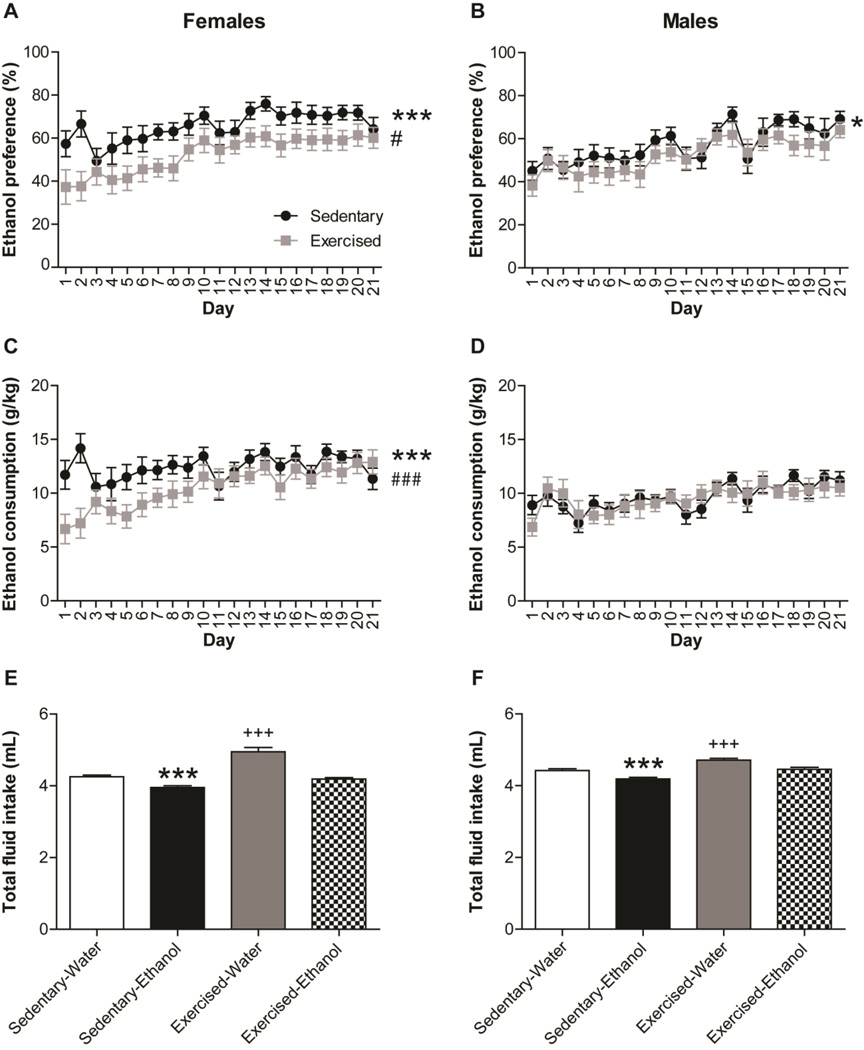Fig. 1.
Voluntary exercise decreases ethanol preference and consumption in adolescent C57Bl/6 mice. Graphs show (A, B) ethanol preference (%), and (C, D) ethanol consumption (g/kg) in (A, C) male and (B, D) female mice along 21 days. Black dots represent sedentary mice, and grey squares represent exercised mice. Total fluid intake (mL) is represented as the mean of the 21 days in (E) male and (F) female mice of the four different groups (Sedentary-Water, Sedentary-Ethanol, Exercised-Water, and Exercised-Ethanol). Data are shown as mean ± SEM; *p<0.05, and ***p<0.001 (Sedentary vs. Exercised); #p<0.05, and ###p<0.001 (Day x Treatment); +++p<0.001 (Water vs. Ethanol).

